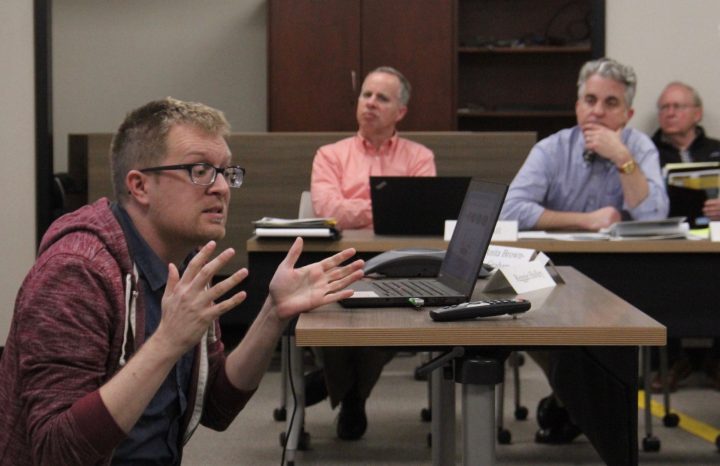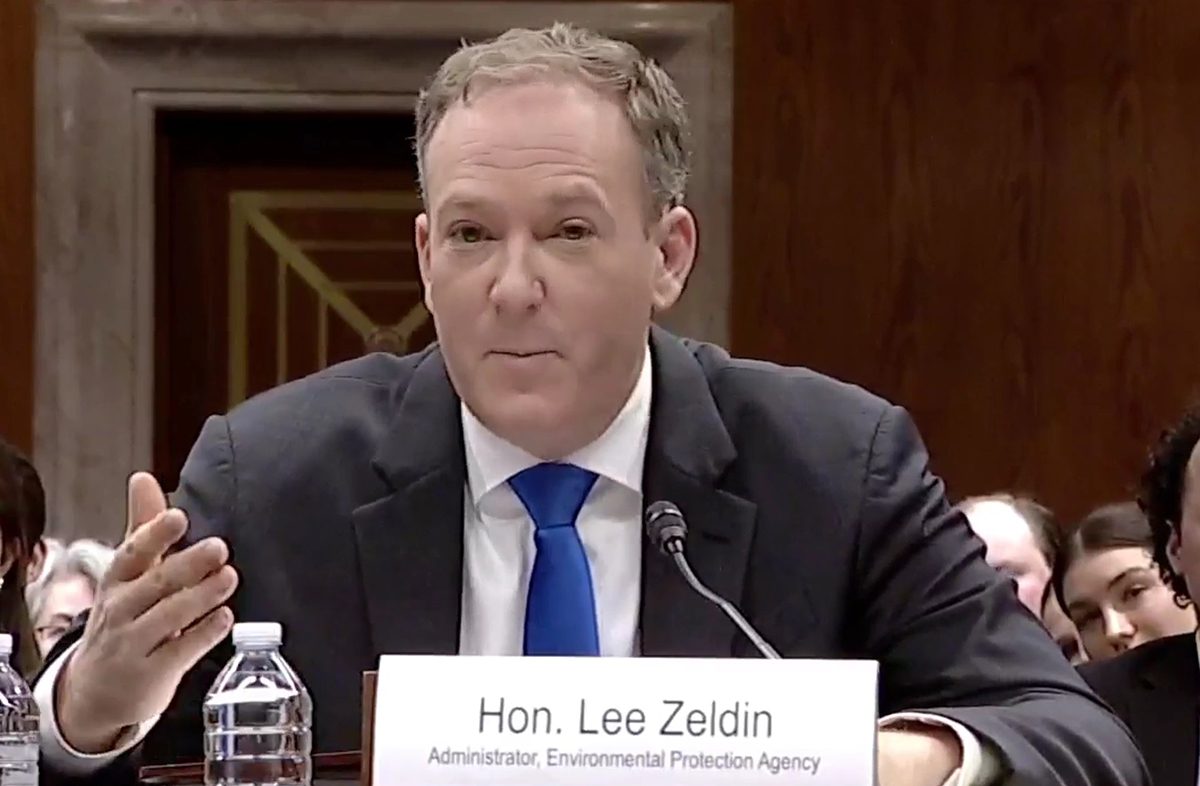
Second in a series
CHAPEL HILL – If you’ve seen Matthew Lockett, assistant professor of chemistry at the University of North Carolina, explain his research, you’ve seen an analytical chemist in constant motion.
Supporter Spotlight
This is especially true while he is discussing pregnancy tests, how they work and how they communicate scientific results in a clear, direct way.
Take one apart, he says, and what you find inside is that the test, which retails around $12, is just a thin strip of paper somewhat like a paper towel. The simple device, which costs about 32 cents to make, is also incredibly effective.
“The pregnancy test, according to the World Health Organization, is the easiest to read test of any point-of-use diagnostics,” he said. Taking the simplicity and accuracy of paper-based tests into other areas is the focus of Lockett’s lab. They’ve developed studies for devices to test for bacteria in food and the presence of metals like lead and hexavalent chromium in drinking water.
Last month, Lockett’s team began working with a group led by Professor Marcey Waters, an innovator in capturing specific molecules. The two are working on creating an easy-to-use test to help address public health concerns about emerging contaminants in North Carolina. Their goal for the next year or more is to develop one for a molecule known by its trade name: GenX.
In early April, Lockett and Waters explained their concept to the advisory board of the North Carolina Policy Collaboratory and how it might fit in the organization’s new initiative on GenX and emerging contaminants. Their project received $50,000 in this year’s round of collaboratory grants.
Supporter Spotlight
Lockett said the goal is to make an inexpensive test that will allow someone to check their water for the presence of GenX with the same simple readout as the two lines in a pregnancy test.
“The pregnancy test, according to the World Health Organization, is the easiest to read test of any point-of-use diagnostics.”
Matthew Lockett, assistant professor of chemistry, UNC-Chapel Hill
“It’ll be the exact same idea for GenX,” he said. “The first line that says the test is working correctly, the second line to say was it there or not.”
The test, he said, could be mass-produced at a low cost. An early estimate put the cost per test for a run of 1 million tests at 50 cents each.
Waters said the capture and detection expertise, coupled with technology to amplify the signal of what’s detected, makes it possible to use the paper test even for molecules in very small concentrations, like GenX. It could also be adapted to target other other per-fluorinated compounds.
The researchers plan to compare paper tests results with results from top-of-the-line mass spectrometry. Using that gold standard, Lockett said, is aimed to give people using the tests confidence in them.
The idea driving the study, Lockett said, “is how do you detect low concentrations of a molecule and how do you detect it in a way that anyone can feel comfortable using?”
Lockett who has also worked on medical tests that can be read through cell phones apps or by telemedicine, said it’s also possible to create databases and location information using readouts uploaded by test users.
A GenX Strategy
Studies on the home GenX test are among the latest round of research grants announced this spring by the policy collaboratory, which was set up at UNC-Chapel Hill in 2016 by the legislature to coordinate university environmental and health research to help guide policy makers. They are part of $430,000 in collaboratory grants for projects on emerging contaminants and GenX.
Studies mandated by the legislature and administrative expenses use about half of the collaboratory’s $1 million annual budget.
Last year, a change in collaboratory funding provisions expanding matching grant options allowed the organization to also tap additional state funds.
One of the tasks in the collaboratory’s early stage is to figure out how to best use money not specifically tied to legislative requests.
At the collaboratory advisory board’s meeting last month in Carrboro, Jeff Warren, the collaboratory’s research director, said last year the organization issued an open call for general proposals to university researchers.
This year, Warren said, it was clearer to collaboratory leadership what the needs were.
“We decided this year we’d like to do a more targeted approach now that we know what the issues are,” he said. The result was the focus on emerging contaminants and GenX. The largest grant of the group leverages matching funds from federal research to draw down $300,000 in state funds for studies on emerging contaminants in private wells as part of a larger, Environmental Protections Agency project, being led by Gillings School of Public Health associate professor Jacqueline MacDonald Gibson.
Her work focuses on the effectiveness of household filtration systems on GenX and other per-fluorinated compounds as well as work on how to increase regular water quality testing by private well owners and improve communications on groundwater by health officials.
In explaining her research last month to the advisory board, Gibson said surveys of well owners in Wake County raised concerns after researchers found that only about 12 percent got their wells tested at the frequency recommended by health officials.
In North Carolina, where more than 3 million people rely on well water, the recommended tests are once a year for total and fecal coliform bacteria; every two years for heavy metals, nitrates, nitrites, lead and copper; and every five years for pesticides and volatile organic compounds.
The state Department of Health and Human Services estimates that less than a fifth of groundwater wells in the state are regularly tested.
With so few residents testing wells and new concerns about GenX and other compounds, Gibson is looking at ways to improve reminders and encouragement for testing as well as how health officials communicate concerns about well water safety.
“In these houses where we were finding all these contaminants people just weren’t aware of the risks,” she said. “People aren’t testing, so how can we encourage people to get their water tested so they know there is a problem?”
She’s been working with a cognitive psychiatrist to study barriers and how to better communicate risk.
In another study, Gibson and North Carolina State University engineering professor Detlef Knappe are leading a group of public and private college researchers to create an inventory of GenX research and looks for ways to improve coordination and close research gaps. The group, which received an initial $80,000 grant from the collaboratory, is also charged with designing and developing cost estimates for a statewide emerging contaminant monitoring plan.
Warren said the project “brings in the cast of academics that are really at the forefront of this issue.”
They plan to also work with the Department of Environmental Quality to identify study needs and data gaps and assist the agency in making regulatory decisions or policy recommendations.
Warren said the group is expected to release an initial report on June 1.
In addition to the focus on GenX, the collaboratory is also funding research on long-term planning by water utilities; whether local government investments in flood plain buyouts are effective; lead in state surface waters with an emphasis on major rivers; a study on the economic impact of the Hemlock Wooly Adegid; and a study on saltwater-based energy storage.










